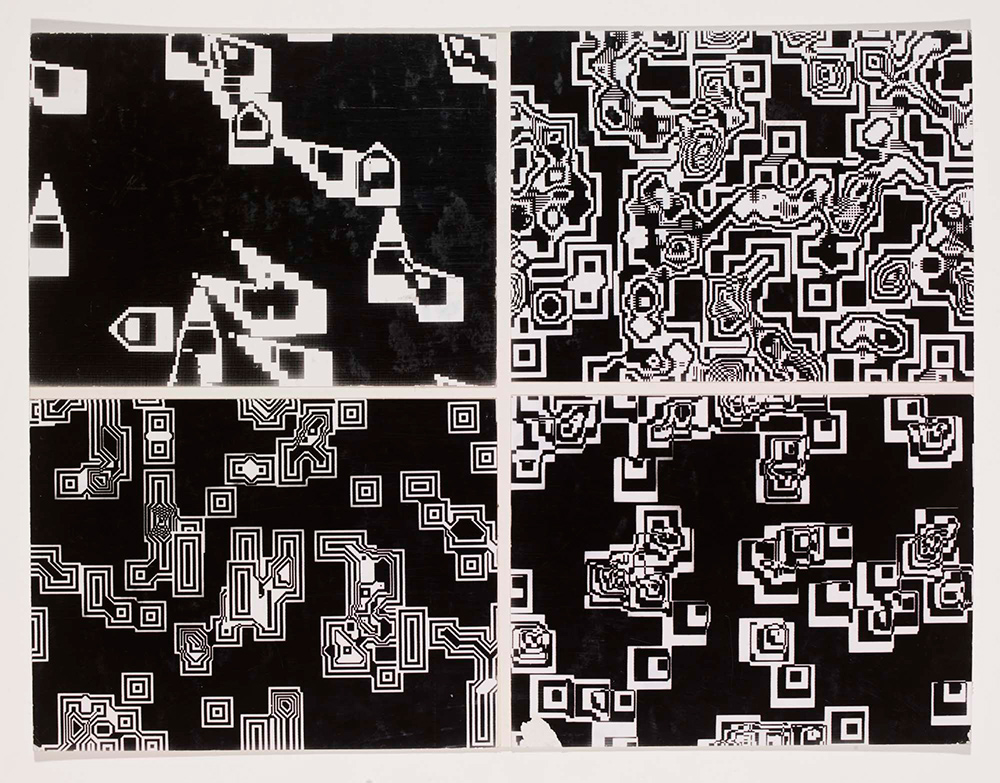https://www.artnome.com/news/2018/8/8/why-love-generative-art
Lillian Schwartz
Pixillation, photographic film stills
1970

The works by Lillian Schwartz can be considered an excellent example of the computational art that applies “randomness”. Lilian is one of the first groups of artists that started to use “computers” to help them generate artwork.
Using computer bases, the works show great randomness but high consistency. Each segment of the diagrams is different to a certain degree, but the overall effects created by the various elements form a very balanced composition. The use of black and white also creates great contrasts to make the geometric shapes more prominent, which are amazing examples of the use of figures and ground.
If take a closer look, you will find that the four pictures are somewhat correlated with each other. The top left can be considered the first version because the shapes are simpler and the forms are more regular–mainly the laying of white squares and black rectangles. The bottom left and bottom right can be considered the second version–the shapes are merging to form more complicated forms, with the bottom left looking more flat and neat and the bottom right looking more three-dimensional because of the overlaying of squares. The top right can be considered the later version because it looks like the designer is trying to make the forms of the merging parts of the squares more irregular and curved.
![[OLD SEMESTER] 15-104 • Introduction to Computing for Creative Practice](https://courses.ideate.cmu.edu/15-104/f2022/wp-content/uploads/2023/09/stop-banner.png)